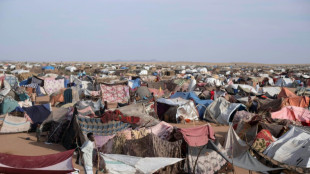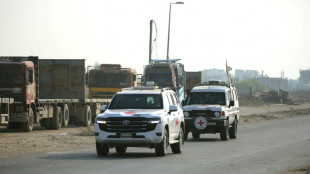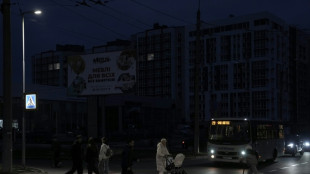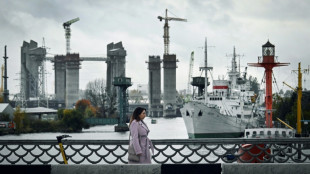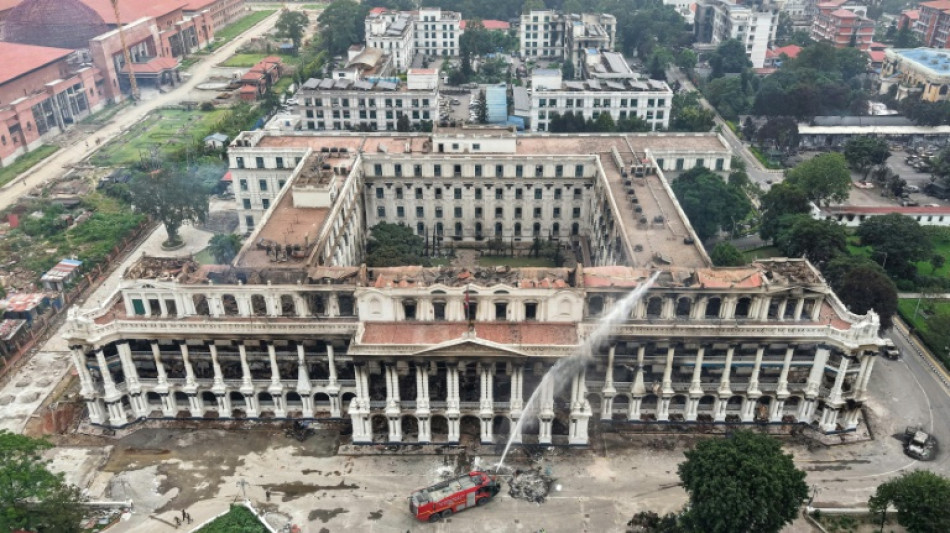

After protests oust PM, Nepal stares into political void
Shaken by deadly protests that ousted its veteran prime minister and set parliament ablaze, Nepal faces the pressing question of who will step into the political void.
In the short term, the army has taken charge of the nation of 30 million people since the protests escalated on Tuesday.
Nepali Army chief, General Ashok Raj Sigdel met Wednesday with key figures and "representatives of Gen Z", an army spokesman said, referring to the loose umbrella title of the young protesters, without giving further details.
But analysts warn that finding a "transitional arrangement" that carries legitimacy with ordinary Nepalis, especially disaffected youth, may prove a thorny task.
Here are the possible power brokers.
- President and parliament -
Sushila Karki, 73, a former Supreme Court chief justice who many see as a potential interim leader, said talks between parties were critical.
"Experts need to come together to figure out the way forward", Karki told AFP. "The parliament still stands."
Constitutionally, President Ramchandra Paudel, 80, holder of the largely cermonial post, should invite the leader of the largest parliamentary party to form a government.
But much of the political old guard has vanished from view.
"The anger... goes much beyond the prime minister, targeting the entire political class", Crisis Group analyst Ashish Pradhan said.
The Himalayan nation became a federal republic in 2008 after a decade-long civil war ended with a peace deal that integrated former Maoist rebels into government.
It last held general elections in 2022.
- Gen Z -
Nepali youth, bowed down by unemployment and limited opportunities, hit a breaking point this week, furious at ruling class they see as out of touch and corrupt.
The protests were sparked not by a single party but in response to the government's short-lived social media ban, which galvanised thousands of young demonstrators.
Karki, the former chief minister, commands respect.
Others with traction among the young are Balendra Shah, 35, a rapper-turned-engineer who won Kathmandu’s mayoral race in 2022.
Also key is Sudan Gurung, in his 30s, a leader of youth rights group Hami Nepal.
The young protesters insist they were nothing to do with the extreme violence on Tuesday, when government buildings and tower blocks were torched.
"The important thing right now is for Gen Z, and this whole movement, to come together and decide on a way forward," journalist Pranaya Rana told AFP.
He warned that they should "not allow their movement to be hijacked by opportunists waiting in the shadows".
- Old guard -
Communist party veteran KP Sharma Oli, 73, a four-time prime minister, resigned Tuesday in the face of protests. His whereabouts are unknown.
His former coalition ally, 79-year-old Sher Bahadur Deuba of the Nepali Congress –- a five-time prime minister -- has not been seen since unrest erupted.
Oli had struck a deal with Deuba to share power during the current parliamentary term, but both men have now been swept aside by public fury.
- Ex-king -
Nepal's monarchy ended in 2008 when Gyanendra Shah was forced from power, ending 240 years of royal rule.
Some public support for the deposed king has since grown -- in tandem with dissatisfaction with ruling politicians.
But despite the extraordinary speed of political events this month, his return remains unlikely.
"The restoration of the monarchy -- even in a ceremonial role -- would pose major risks of a return to autocratic rule", the Crisis Group said.
G.Galindo--ECdLR



